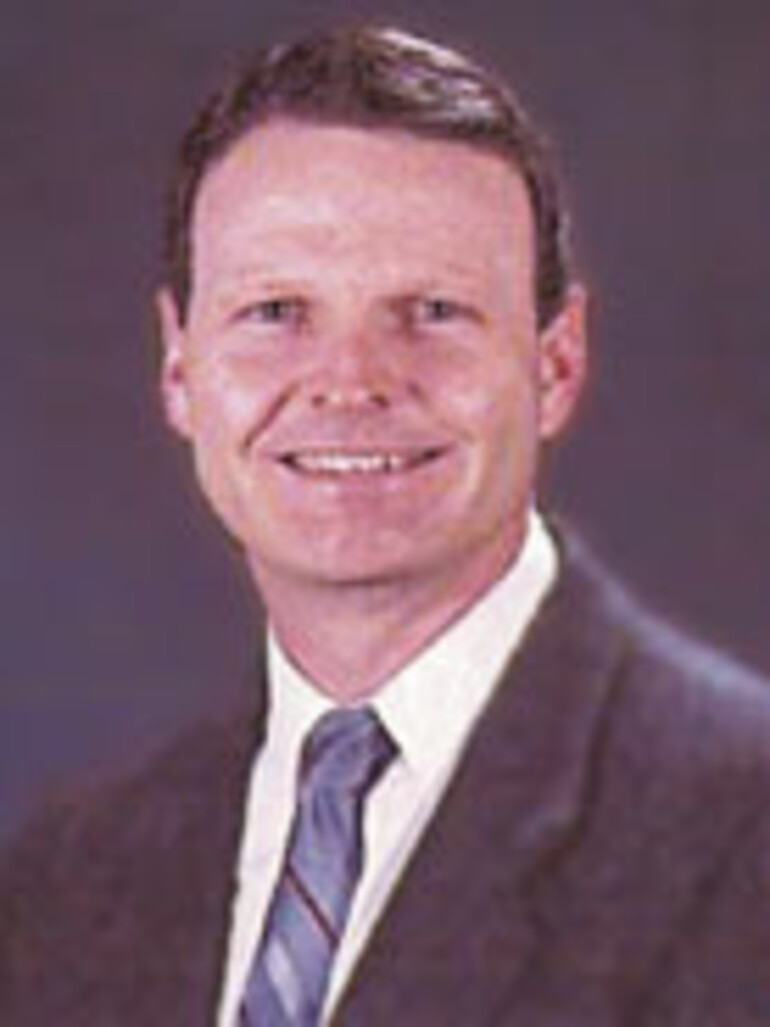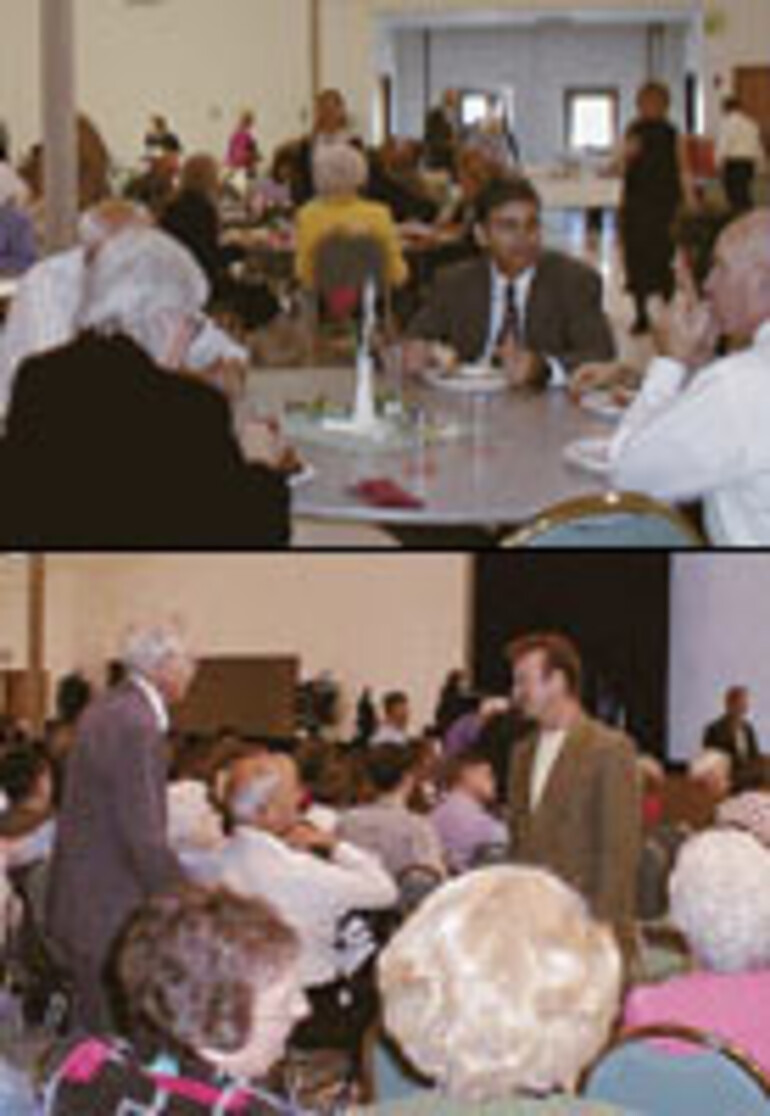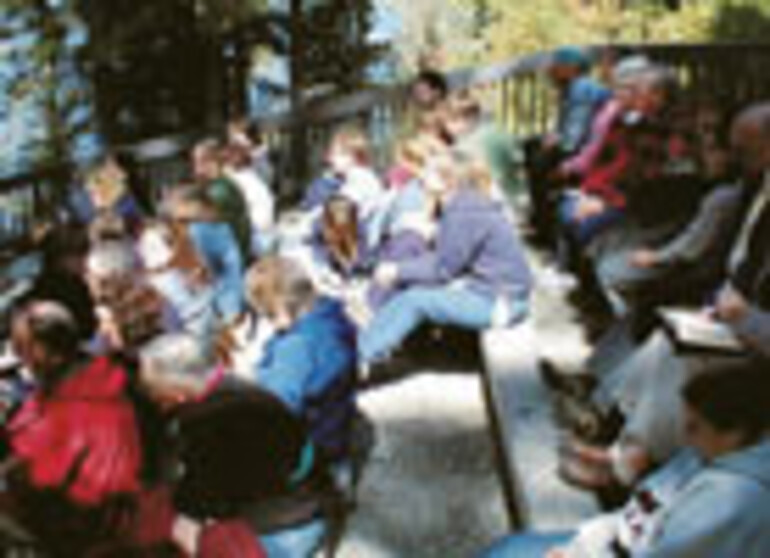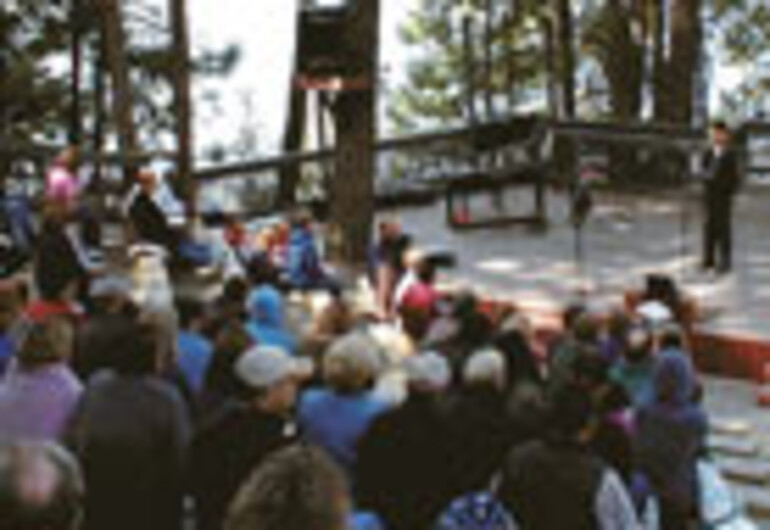Come they told me, Pa rum pum pum pum. A new born King to see, Pa rum pum pum pum....”
It was 1958 when Katherine K. Davis published her heart-melting ballad about a shepherd boy and his rhythmic quest for Baby Jesus. It’s now a classic.
For through its saccharine lyrics comes a precious, childish, heartbeat-like rhythm that touches hearts of children four to 84.
“There’s a reason for the Christmas season,” the song declares. “But there’s also a rhythm to the season. Christmas is a drumroll experience.”
So it has always been in the medley of life. We live most days to the civilized monotony of a metronome. But at quarterly intervals, humanity hears drumrolls.
Long before paganism besmirched these moments with tattoos of idolatry, God claimed them Himself.
Passover, Yom Kippur, Feast of Tabernacles, and the Feast of Weeks all come at or near the cusp of seasonal change.
The Drummer Boy of life is heard in earliest Scripture, calling the people to search out in the seasons His roles as Messiah—Creator, Re-creator, High Priest, Judge.Paganism
For dark centuries, paganism tried to claim the seasons. And, today, many Christians still question the propriety of celebrating Christian holy days at times once associated with excess and idolatry. But no one contests that quarterly celebrations are biblical.
Indeed, Adventist pastors long have known that the months of January/February, March/April, and October/November (months immediately following changes of season) bring better and more committed crowds to evangelistic meetings.
Latin American Adventists every year tie evangelism to the Holy Week/Passover season, finding, as Adventist pioneer writer Ellen G. White predicts, that spiritual receptivity in the general public is highest during spiritual holiday times.
And perhaps more than coincidently, the “13th Sabbaths” long celebrated by Adventists with special programming and Communion services, fall each year within 10 days of the beginning of spring, summer, fall, and winter.
In the Northwest, where church attendance is the lowest per capita in the nation, creative Adventist congregations are exploiting these times to powerfully proclaim the gospel.
Nativity Pageants
Next month, the Oregon Conference and many Portland-area Adventist congregations host a Nativity Pageant on the grounds of Gladstone Park, Oregon Conference Camp Meeting site for nearly 80 years.
The event will be highly advertised in the community, and the spacious grounds and vast parking areas will allow members to comfortably build props, erect scenery, and stage pageant acts.
Paul Johnson, who pastors the nearby Gladstone Park Adventist Church, says he believes the event will be so successful, participation by community members so great, it will become a yearly event.
The Kelso-Longview Adventist Church in southwestern Washington has held a yearly pageant in mid-December for the past seven years, hosting thousands, and bringing many into closer relationship to Adventist church members. It has become a strong source for contacts that lead in time to baptisms. Kelso-Longview members improve their pageants each year, adding nuances and authentic touches to keep them exciting and new.
Several other Northwestern churches have begun hosting Nativity pageants, and many others conduct less exotic Christmas and Thanksgiving programs for the community, with excellent response.
Northwesterners seem particularly reticent to enter and worship in church buildings, leading more and more churches to reason, “If they won’t come to us, we’ll go to them.” One of those churches is found in Hermiston, Ore., pastored by Kevin Wilfley.
Re-Creation Outreach
His friends call him focused and driven. And as a pastor, that which focuses and drives Kevin Wilfley are plans that lead to converted, changed lives.
“Research shows that the two great obstacles to church attendance, listed by Northwesterers, are lack of relevance and competing weekend attractions in nature,” says Wilfley.
Back in 1980, as a wet-behind-the-pastoral-ears intern, Wilfley began his ministry under then-East Salem Church pastor Dwight Nelson, in the Willamette Valley.
Pastor Nelson assigned Wilfley the responsibility of ministering to the youth of the East Salem Church. Over time, attendance at the youth Sabbath school increased. Indoor and outdoor activities with re-creation in nature figured in that formula.
A firm believer in the wisdom to be found in books by Ellen G. White, Wilfley began a thorough review of her statements and commentary on ministry in the out-of-doors. He was overwhelmed by the quantity of writing that endorses its use for worship, praise, meditation, and learning.
“Amusement is counterproductive to the gospel, but re-creation is complementary,” says Wilfley. “Ellen White enthusiastically encourages us to do ministry in the out-of-doors. In a nutshell, she says that nature softens the heart, is a useful source of illustrations, connects heaven with earth, helps children be attentive, and awakens reverence and awe. I have six, solid, single-space typewritten pages filled with quotes endorsing nature as a staging ground for worship and outreach.”
Not one to procrastinate, Wilfley began exploring the possibilities. Beginning with youth and children, he quickly saw how outings and special out-of-door activities captivated their interest in spiritual things.
In one situation, only three or four children were attending Sabbath school; within a year, between 20 and 30 were attending each week.
Adult Ministry
“Frankly, I have been frustrated by ineffective evangelism,” Wilfley says, reflecting on his 23 years as an avid preacher and evangelist.
“I’ve personally done every kind of evangelism known to Adventism, from series of meetings to Revelation seminars, from satellite evangelism to video studies. I’ve been there, done that. And what I’ve concluded is that we try to make public evangelism carry the whole load of outreach. It doesn’t work very well. Christ’s method alone works, and that calls for mingling with the people well in advance, winning their confidence, showing sympathy, and ministering to their needs. And especially here in the Northwest, a lot of this can and should take place in the majestic out-of-doors.”
Holiday Season
“I now realize that my main job as a pastor is to provide opportunities for our people to mingle and minister to others’ needs,” he says. “We live in a world of high technology, but books like ‘Megatrends’ are telling us that ‘high touch’ —relationships—are becoming more important to people than ‘high tech.’ What better place to touch people’s lives than in nature—where Northwesterners seem to prefer to be on weekends, anyway!”
So he began planning events, reserving the Upper Columbia Conference MiVoden Youth Camp, where he took a group of members and their non-Adventist friends for a weekend outing by the lake.
“It was not particularly hard to invite North-western, non-Adventist people to go spend time together with us at a beautiful camp, by a lake,” he says.
Twenty-five non-Adventists accompanied Wilfley’s group on its first outing, and the response was outstanding.
“The people kept telling me, ‘This is wonderful, absolutely wonderful.’ One said he felt spiritually cleansed; a woman said she could now see why Adventists cherish the Sabbath. Of that group, 11 were eventually baptized, and now, several years later, all remain firmly connected to the church.”
This September, 36 non-Adventists attended the MiVoden retreat. One woman, a counselor with a Ph.D., told an Adventist friend that the Sabbath she spent at MiVoden was “like I was in heaven all day.”
Two requested baptism, two asked for personal Bible studies, and others joined weekly small-group Bible studies.
True to the seasons, Wilfley holds at least four witnessing-oriented events a year, several of them in nature. Next month, on Dec. 13, the church will host a special Christmas event at the local community center. Early next year comes a snow retreat. In May, members will serve a Mothers Day Brunch, and in September, a group will go on the yearly retreat to MiVoden. Then, in October, an evangelist will conduct a reaping series.
“Here in Hermiston, the people are friendly. We have a fine school, and Adventists are known in the community. Yes, we have advantages here,” he says, “but I know that many churches in the Northwest have similar potential. Not all, but most. My question is, ‘Are we preparing our outreach in ways that allow us to mingle and minister in the manner of Christ?’
“Ellen White tells us—in fact, I have four typwritten pages of her writings on this topic—that the holidays and other recreational occasions are ideal times to mingle with the people and make first impressions. The people are more receptive, more in tune with spiritual things. As a result of what we’re doing here, 90 percent of our baptisms are of people we know well, as friends. These are people who are very unlikely to be exiting out the back door anytime soon.”
Begin Today
Not all churches can manage elaborate Nativity pageants. Not all can host Mothers Day brunches or celebrate the fall colors at a lakeside lodge.
But what we all can do is plan and prepare to reach out and touch our communities in areas of need. Opportunities and strategies may vary from place to place. Some communities have changed in recent decades, and so have their needs and expectations.
A good time to reach out and make new friends for the Lord comes during the holiday season. Plan to prepare a special Thanksgiving or Christmas program, this year, and focus on inviting the community to take part.
Package your hospitality for the people. Let visitors and returning members see your church at its best. It’s a great time to make friends and begin a cycle of seasonal seed-sowing and reaping.
It’s the kind of gift the Little Drummer Boy gave his Baby King—the gift of a loving and lovable heart.
That First Impression
Mike Jones, former editor of “Insight,” pastor, public relations professional, and businessman, now lives near Portland, Ore. For several years, he became an inactive Adventist, rarely if ever darkening the doorstep of a Northwestern church. But that changed several years ago, and Jones now is developing a ministry to help reclaim inactive Adventists.
We asked Jones to help us understand the importance of the holidays in connecting and reconnecting with visitors and non-attending members.
GLEANER: Why are holiday-time programs attractive to visitors who wish to connect or reconnect with God and His Church?
Jones: The holidays are a time people seem eager to connect with old friends. It’s a nostalgic time, around Christmas, that in their mind brings back memories of a simpler time. And it’s not as busy a time for them as at other times of the year.
GLEANER: If a church were to intentionally design and advertise a special holiday program, what elements should be included?
Jones: Fellowship, fellowship, fellowship. The seeker attends such programs, I believe, with the hope of some warm connections with old friends and, if not old friends, at least some kind of warm fellowship with someone. And I’d consider leaving out all those announcements during the church service—sorry—and any prolonged offering appeals and talk about the church’s budget deficits....
GLEANER: What are key things to remember in welcoming visitors to our churches?
Jones: Actually, there are four main things. Make eye contact with them. Second, smile at them, conveying acceptance and love. Third, make physical contact. Firm, warm handshakes do a lot to establish some connection. And finally, ask questions and really listen. Listen empathetically, keeping the mouth sutured. This takes a lot of practice. Connections take place when people listen.
GLEANER: In order for visitors to want to continue attending a church, what are some of the dynamic things that need to occur during their holiday visits?
Jones: The main question is, “Does anybody care about me?” The church has about five minutes before any visitor decides whether or not to come back in the future. A second important thing is the sermon. Does it have any Monday-morning take-home value? People are looking for hope. Adventist sermons I’ve heard since returning to the Adventist Church don’t often provide a lot of hope—are not very Christ centered. Sorry.
GLEANER: How should an active Adventist “visualize” a visitor/returnee in order to empathize and minister to him or her during their visit?
Jones: Most people visiting a church are experiencing some kind of crisis. I’m not sure how we can visualize a relationship breakup, an overwhelming addiction to porn, sex, alcohol, food—whatever. Then there are worries about finances, children, job, unemployment, etc. These are some of the things to be visualized. Maybe a better idea is simply to know that most visitors, no matter how groomed and poised, are wounded, needy, want to be accepted, affirmed, feel cared about, and valued.
GLEANER: How should we deal with situations where a visitor appears in the lobby, dressed and groomed in a way some would find inappropriate for an Adventist service?
Jones: Just reach out to them, regardless of the jewelry or spiked hair, etc. Just as if they were Aunt Matilda in her granny dress. Treat them well.
GLEANER: What are some resources available to churches that want to show greater hospitality year-around?
Jones: There are several. Fordyce Detamore’s “Seeking His Lost Sheep” is still a readable classic. Don Gray has produced a good video program, “Safety Zone,” available from the Center for Creative Ministry in Lincoln, Neb. But nothing can take the place of having the Holy Spirit in the life. It enables us to be authentic and to really care about people from the heart.
GLEANER: Suppose one of our GLEANER readers believes he or she has a special gift to minister to visitors and those who have drifted from active membership. What advice would you give them?
Jones: I’m in favor of trying to maintain connections. One idea is to start a small group (sometimes called a growth group) fellowship in your home, once a week, inviting people who seem stressed or frustrated. The group should meet for no more than 90 minutes at a sitting, and discussion should have a strong, practical emphasis on grace. Terrific bonding and friendships develop in such groups, if they are well run. Kurt Johnson and others have written some good books on how to run these groups. They can be powerful and help us all get through the bad times.











